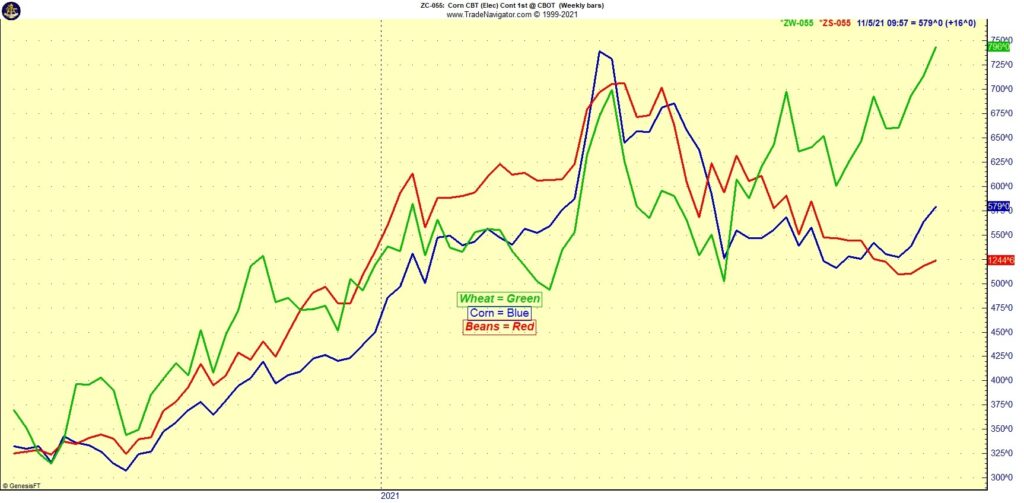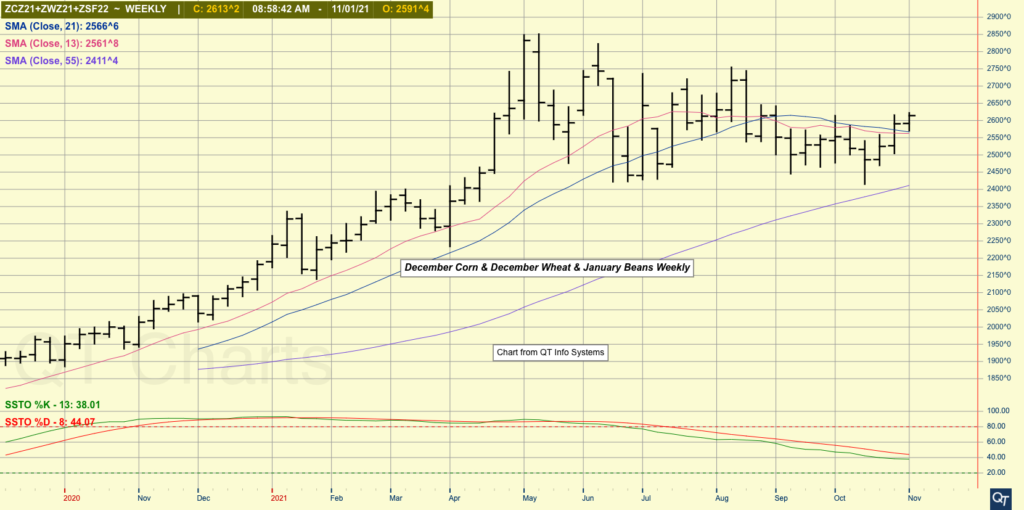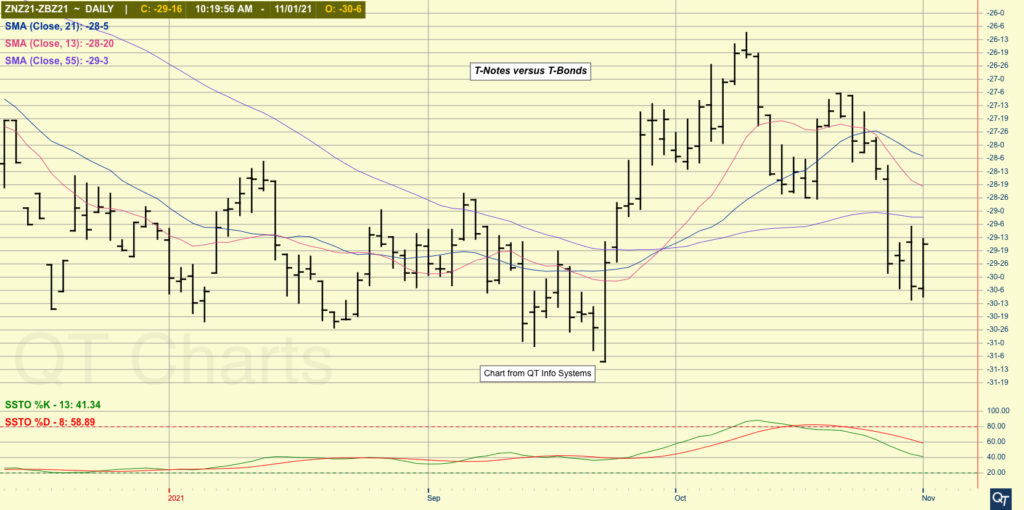New month, same pattern. We finished off October with a surge higher in corn and wheat while beans struggled, and it would appear that sentiment has bled over into the eleventh month of this calendar year. Wheat continues to provide the leadership, with corn tagging along as a dutiful sidekick and beans acting apathetic towards the whole affair.
We have seen the weekly combination chart poke in higher highs and higher lows now for the third week in a row. Still, the overall picture just appears to be one of corrective retracement, not the beginning of something new and significant. With the strength this morning, we are just now reaching up to complete a 50% retracement of the May/October trading range.
We did at least kick off the week/month with the announcement of a new sale, but I doubt it stirred the soul or many bulls. In fact, these have become rather routine. China purchased 132,000 MT of beans.
It would appear that we have a pretty clear weather forecast throughout the Midwest for the next 10-day to two weeks, so the 2021 harvest should be brought home without many issues. The mercury here in Northern Illinois finally dropped below the freezing mark, and by the end of this week, these types of temperatures should push down into Ohio valley and beyond. Maybe that will finally take care of the rest of the flies for the year. Outside of harvest pace, the next focal point for the market should be the November production & supply/demand report, which will be released next Monday, the 9th. Keep in mind; this will be the last production estimate for the calendar year.
The Federal Reserve begins a two-day meeting this week, and it is widely expected that they will decide to begin the tapering process. The action in financial instruments as late would suggest that markets have been prepping for this move to come sooner than later as we have seen 10-year notes push lower (higher rates) while 30-year bonds have moved higher, thus flattening the yield curve. While the Fed may still believe many of the inflationary factors will be “transitory,” they appear ready to begin doing what they can to speed up the transition.


